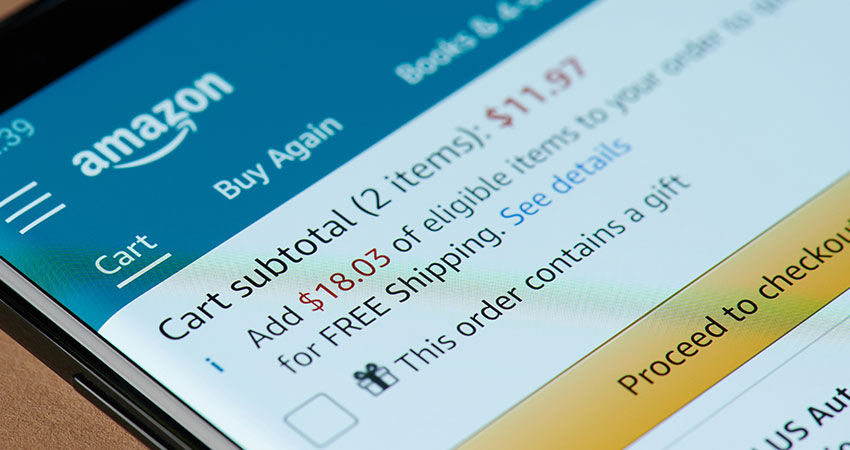Amazon has recently adjusted its “buy box” product search algorithm to favor items that can be delivered fulfilled faster by merchants themselves ahead of Prime eligible products, either seller fulfilled or first party from Amazon, which are taking weeks vs. days, experts say.
This is separate from an issue called out by a piece in Recode, where Amazon “hid” results for Prime-eligible products that could be delivered faster in favor of the same items sold by Amazon itself, which the company said it would fix.
Since the coronavirus crisis began in earnest last month, FBA has been backlogged due to high demand and the prioritization of essential orders. Amazon gave a date of April 5 for when it would begin easing restrictions on nonessential products in FBA, which has begun to happen for some high-volume product categories.
James Thomson, co-founder of Amazon seller advisory firm Buy Box Experts and a former Amazon employee, said he and seller clients noticed the algorithm change last week, adding it was “easy to figure out if you’re paying attention.” Amazon could not be reached for comment.
“On Fulfilled By Merchant (FBM) offers similar to FBA offers, they’re giving preference to FBM in the algorithm,” Thomson said. “I’m sure they’ll tweak it back. I’ve had clients who had to jack up the price of their FBA offer in order to lose the buy box and revert to their FBM offer. The problem is, if you increase it too much, you could get slammed for price gouging.”
Thomson also said he had recently noticed some relaxing of the restriction on nonessential items through FBA.
“There are products you and I would not consider essential but they’re being allowed back in FBA because they’re high volume,” he said. “Some categories I’ve seen with clients are exercise equipment and ‘as seen on TV’ items. They’re hardly essential but selling well even when they’re not in FBA.”
Peter Marlega, director of operations at mobile phone accessory seller Tech Armor, said he too had noticed and adapted to Amazon’s buy box algorithm change – in some cases raising the price of an FBA offer so the FBN offer would win, as Thomson’s clients have done.
“This is unprecedented in my experience,” said Marlenga, who has been in ecommerce since 2006 and has been using FBA for years. “It’s the smart thing for Amazon to do, because they’re still getting the sale. We’ve always done both FBA and FBM listings. But just three weeks ago, even if made my FBM listing 75% of the FBA price, the FBA offer still wins the buy box. I can even offer overnight shipping, but FBA still wins.”
The algorithm tweak has significantly improved conversion rates, Marlenga said. Prior to the change, if Tech Armor had a product listed through FBA and inventory ran out and its FBM offer won the buy box, the conversion rate would still dip by 50% to 75% as buyers searched and easily found a competing Prime offer with two-day guaranteed shipping.
“Now in when we have an FBM offer in the buy box, the conversion rate is only down 10%-20% (from competing Prime offers),” he said. “I imagine shoppers are searching and finding that Prime eligible offers have a 21-plus day lead time and they’re coming back to us.”
Both Marlenga and Thomson believe Amazon’s algorithm tweak will be quickly readjusted to what it had been, once the coronavirus situation and all its logistical and capacity challenges abates.
Thomson said the difference between what Recode pointed out and this new algorithm adjustment is that issue only affected merchants in the Seller Fulfilled Prime (SFP) program. In those instances, he said Amazon was basically “awarding itself the tie” when there were competing 1P and SFP offerings.
“Amazon says it weighs many variables in the algorithm, including delivery date and items at or near the lowest price,” he said. “Because of the outlandish changes in delivery dates, that variable was not given enough weight in the buy box algorithm.”

